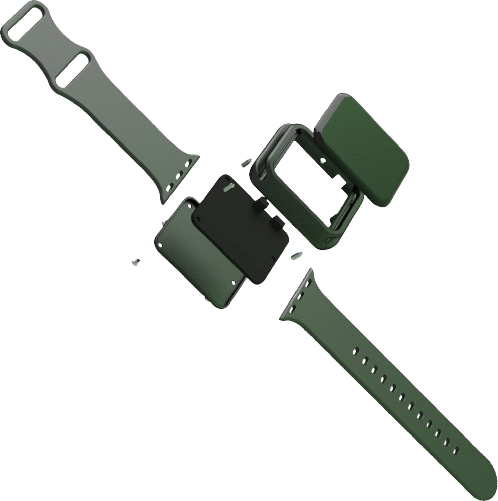We want to bring your ideas to life
CATALOG OF
PROTOTYPES
You can now access over 30 examples of prototypes designed and manufactured in our lab

As we explained to our community of inventors, 3D printing is not the same as manufacturing a working prototype. In fact, 3D printing techniques are only part of the manufacturing process of a prototype.
3D printing techniques allow to accelerate the innovation process, facilitating the realization of countless proofs of concept. As you know, the ability to iterate is key to getting the best possible functional prototype.
As 3D printing techniques become so relevant, from the technical team of Let's Prototype we will make a very brief and practical summary so that you can understand the most democratized options in the market, of course, also available in our prototype design and manufacturing laboratory.
We want to bring your ideas to life
You can now access over 30 examples of prototypes designed and manufactured in our lab

What are the most popular 3D printing techniques?
What is Fused Deposition Modeling? (FDM)
FDM is the most democratized 3D printing technique on the market. It is the printer that comes to mind when the term is mentioned.

This type of 3D printers make up the pieces while feeding on plastics in the form of filaments, like a kind of thick thread, which goes through a hot extruder that places the material through points, layer by layer, until the construction of the pieces is achieved.
The reality is that, in a few hours, almost any type of part can be built, useful for testing concepts and finding substantial improvements over functional prototypes.
In Let's Prototype we have tested multiple models of 3D printers (FDM), the truth is that, although it seems to build parts autonomously and accurately, the reality is different:
Although it may seem that we are enemies of FDM 3D printing techniques, nothing is further from reality, it is part of our day to day and after almost a decade working with them, we combine them with others such as SLS, SLA as well as with the manufacture of wooden molds, silicone, among others.
What is Stereolithography? (SLA)
Unlike FDM 3D printing techniques, the SLA is fed with liquid resins in a kind of pool. From the lower surface of the tank, laser light points are applied that cure said resin, until the change of state, from liquid to solid, of the different resins is achieved.
In Let's Prototype we have tested multiple models of 3D printers (SLA), the truth is that today, we manufacture with this technique, very small parts with very high levels of precision and large format parts, with the same level of accuracy between the result and the design.
According to our experience, about the SLA we can tell you that:
What is Selective Sintering? (SLS)
Although the techniques of 3D printing, SLA and FDM, analyzed above, offer compromised mechanical resistances, the truth is that Selective Sintering or SLS, comes to solve this commitment.
Remember that in the case of FDM and SLS, the adhesion layers that confirm the pieces, start from the filament extrusion or solidification of the liquid resin respectively. In the case of SLS, the parts are formed through the powder function with a very powerful laser.

As main advantages and disadvantages of this technique, in Let's Prototype, we highlight that:
What is the best 3D printing technique available?
We found no better way to help you make decisions about printing techniques, than summarizing in a comparative table the experience of the design and mechanics team of Let's Prototype.
FDM | SLA | SLS | |
Precision | Regular | Very Good | Excellent |
Aesthetics | Regular | Excellent | Excellent |
Usability | Very Easy | Very Easy | Medium complexity |
Print speed | Speed | Speed | Low |
Costs | Low | Middle | High |
Mechanical Strength | Low | Low | High |
Although in this post we have described the most democratized 3D printing techniques in the market, the truth is that, in Let's Prototype we complement these techniques with artisanal processes, as well as cold molding techniques.
As a main conclusion, we must be clear that there are no good and bad 3D printing techniques, their selection depends on the requirements of each prototype and the objectives pursued with each one.
The time to bring your ideas to life is now. We accompany you throughout the entire process: from idea to product.
San Juan Ingenieros, S. L, is the owner of the domain www.letsprototype.com, and in accordance with the General Data Protection Regulation (EU 1679/2016), we will process your data exclusively to handle your information request. You have the right to rectify or request the deletion of your data at any time via hello@letsprototype.com.